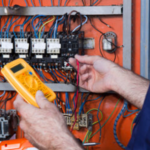
Walk through metal detector rentals are increasingly used in high-traffic areas to enhance security without causing major disruptions. Places such as airports, stadiums, concert venues, government buildings, and large corporate offices benefit from the quick and efficient screening these devices provide. However, managing walk through metal detector rental use in busy environments requires careful planning and implementation to maintain safety while minimizing congestion and frustration. This article outlines best practices for using walk through metal detector rentals effectively in high-traffic settings.
Assessing Security Needs and Traffic Flow
The first step to successful deployment is understanding the volume and patterns of foot traffic. High-traffic areas experience large numbers of people moving through entry points simultaneously, so knowing peak times and expected attendee numbers helps determine the number and placement of metal detectors required. Proper assessment ensures that security screening does not create bottlenecks or excessive wait times.
Choosing the Right Number and Type of Metal Detectors
Depending on traffic volume, multiple walk through metal detectors may be necessary to handle the flow efficiently. Renting several units can spread out the screening load, reducing queues and wait times. Additionally, pairing walkthrough detectors with handheld wands enables quick secondary screening for those triggering alarms without slowing the entire line.
Strategic Placement and Layout
Position metal detectors in locations that allow for smooth queuing and easy access to secondary screening areas. Use barriers or ropes to guide people into organized lines, preventing crowding or chaotic clustering. Ensure enough space around each detector for operators to conduct additional searches if needed without blocking traffic. Entrances should accommodate all devices and allow for emergency exits to remain unobstructed.
Pre-Event Communication and Signage
Informing attendees ahead of time about security screening protocols helps set expectations and encourages cooperation. Use clear signage at entry points explaining the process, prohibited items, and the need for metal detector use. Event websites, tickets, or communications can also highlight security measures, reducing surprises and improving overall experience.
Training and Staffing Considerations
Properly trained security personnel are essential for efficient metal detector operation in high-traffic environments. Staff should be skilled in operating the devices, managing lines, performing secondary screenings respectfully, and resolving alarms quickly. Having enough personnel prevents delays and allows for swift intervention if issues arise. Rental providers may offer trained operators or assist with training your team.
Calibrating Equipment for Optimal Performance
Metal detectors must be properly calibrated to balance sensitivity and false alarm rates. Overly sensitive settings may cause frequent alarms, slowing entry and frustrating attendees, while too low sensitivity might miss prohibited items. Testing and adjusting settings before peak times helps maintain smooth operations and effective security.
Maintaining Privacy and Courtesy
In crowded spaces, it’s vital to conduct screenings with respect for individuals’ privacy and dignity. Operators should communicate clearly, be polite, and follow standardized procedures to avoid misunderstandings or discomfort. Secondary searches should be done discreetly and in designated areas whenever possible.
Implementing Efficient Secondary Screening Procedures
To avoid holding up lines, establish a streamlined process for secondary screening. Designate a separate area near the detectors where individuals triggering alarms can be quickly and thoroughly checked using handheld detectors. This keeps the main entry points flowing and reduces congestion.
Regular Monitoring and Adjustment
During the event or daily operations, continuously monitor traffic flow and equipment performance. Be ready to adjust staffing levels, device placement, or detector sensitivity in response to changing conditions. Flexibility and responsiveness improve both security effectiveness and user experience.
Emergency Preparedness and Protocols
Ensure that metal detector placement and security protocols comply with safety regulations, including maintaining clear emergency exits and pathways. Train staff on emergency procedures so they can respond quickly if an incident occurs, balancing security with the need for rapid evacuation if necessary.
Leveraging Technology and Reporting
Some rental metal detectors come with integrated counting and reporting features that track the number of people screened and alarms triggered. Using this data helps refine operations, identify peak times, and improve future planning. Technology can also enhance accountability and transparency in security processes.
Conclusion
Using walk through metal detector rentals in high-traffic areas is an effective way to maintain safety without compromising flow and convenience. Best practices include careful planning of device numbers and placement, clear communication, well-trained staff, and responsive operations. By implementing these strategies, organizations can create secure environments that respect the needs of both security personnel and attendees, ensuring smooth and professional screening experiences even during the busiest times.



